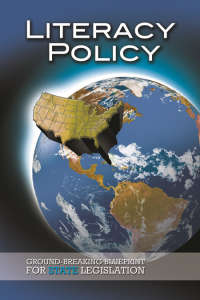2011
By Carolyn D. Cowen
Full Disclosure: A little less than twelve months ago, I knew almost zilch about social media. In fact, I am tech-phobic. Really. Ask anyone who knows me. The largess of my husband and children along with occasional panicky interactions with “tech support” enable me to stumble along in the digital era with a modicum of competence.
As social media began emerging as a game changer, I was dismissive (“That’s for college kids”). Despite being married to a new-media expert and early-adopter guy, I was slow to recognize the power of social media, even as it began invading our household—long before “friend” became a verb.
Over time, I did succumb to environmental pressure. I acquired a Facebook page, joined LinkedIn, and started a Twitter account. I would trot out these social-media credentials when feeling the need to demonstrate that I was not some hopeless digital illiterate. Truth be told, I wasn’t very active on any of these platforms. For the most part, I was:
- Mystified—Why is every news anchor on the planet suddenly talking about hashtags?
- Cynical—How can anyone say anything significant in 140 characters?
- Fearful—God knows what evil lurks beneath the benign-looking social-media surface? (Stories about hackers and phishing scams seemed reason enough not to venture into those dangerous waters.)
Then, about a year ago, my husband gave me a Christmas present—a box of books on social media. Imagine my enthusiasm. He also challenged me on two fronts, posing questions along these lines:
- As someone who is a social entrepreneur and mission-driven, isn’t it time to learn how to leverage social media tools to achieve your goals?
- How can you be so concerned with print literacy and education and ignore new-media literacy and the imperative to prepare children to live in a world that will demand new-media competence?
![]() Grudgingly, I began reading and trying some of the strategies. I started with LinkedIn because that seemed a more professional arena and, well, more grown up than Facebook. (Yes, I know Facebook is the most powerful platform, but at that stage it just felt frivolous to me.) Next, I delved into Twitter because that seemed less complicated and easier to incorporate into my busy life.
Grudgingly, I began reading and trying some of the strategies. I started with LinkedIn because that seemed a more professional arena and, well, more grown up than Facebook. (Yes, I know Facebook is the most powerful platform, but at that stage it just felt frivolous to me.) Next, I delved into Twitter because that seemed less complicated and easier to incorporate into my busy life.
To my surprise, I began to like dabbling in social media and found myself venturing into its deeper waters. Most importantly, the small experiments I conducted began producing results, especially on Twitter (results I will explain later in this chapter). I was inspired.
But I was a Closet Tweeter. Most of my esteemed colleagues were not, God forbid, tweeting and I was not ready to confess that I had crossed over. Nevertheless, building on small but significant successes and with scaffolding and support from the books and my husband, my learning accelerated. I witnessed the power. With cautious enthusiasm and great trepidation, I emerged from the closet to share this power with colleagues.
There is nothing more irritating than the sanctimony of the newly converted, so I promise to temper my zeal. You will hear no claims from me that social media will bring world peace, arrest climate change, or solve the thorny challenges we face in education. Hazards do indeed lurk in social media’s waters.
I will, however, try to persuade you to test these waters and to learn to swim in them with some degree of competence. In a nutshell, here is why: To achieve your goals and for the sake of the children whose future you steward, you must begin to understand and leverage the power of social media.
If you are reading The Power to Act: Transforming Literacy and Education, the assertion above almost certainly applies to you. (Editor’s Note: This material is excerpted from the forthcoming second edition of this book.) Very likely, you, too, have been dismissive of social-media and still are a bit mystified by, somewhat cynical about, and slightly fearful of its power. In fact, I am willing to go out on a limb and bet that most readers of this book are not digital natives.
You are the very audience for whom this chapter is written. My goal is to help non-digital natives who are doing important work venture into social media, understand its power, and begin learning how to leverage its tools and strategies for good.
Any Google search will yield plenty of social-media how-to books destined to become obsolete in six months. Things are happening that fast. Instead of providing nuts and bolts detail that may not be relevant in several months, I will drop a few breadcrumbs to help you get started on the path—particularly the Twitter path—and provide a bit of scaffolding and support to help you find success and feel inspired to persevere.
I know. You want me to tell you exactly how to do social media step-by-step. We non-digital natives like books and are not so comfortable with discovery learning, especially when it comes to technology. We want direct, systematic, explicit instruction. We want someone to break it down, make it multisensory, and provide guided practice. So, go buy a book (see chapter notes for the books I received for Christmas). Go find a mentor. Seriously. Do it. My goal is to inspire you to take such steps, while I drop a few of those breadcrumbs to help you get started.
Remember: I am not a social media guru. Think of me as someone who traveled the road just a few steps ahead of you and has circled back to offer a few pointers about how and why to start down the path—to tell you about some of the awesome vistas ahead and to help you get oriented. Think of me as one who has not traveled far enough along the road to give you a comprehensive map. You must find your own map and guides to help you on your journey. But I can help you begin. So, let’s do it!
NOTE: This material is excerpted from a new chapter in the forthcoming second edition of The Power to Act: Transforming Literacy and Education—see below for order information.
Want to Learn More?
Twitter Power: For Literacy Educators & Activists is a small-screen/online presentation developed for the 2011 International Dyslexia Association conference session, “Leveraging Literacy Legislation for a Literate Nation.” This presentation along with its companion — Twitter Tutorial: How-2 Links — cover the basics for those who want to understand and leverage Twitter’s power to drive change.
IDA Model State Literacy Law: State Literacy Laws for
Every State, Every Student, Every Teacher-of-Reading, Every University and College of Education.
The Power to Act: Transforming Literacy and Education, by Cinthia Coletti Haan



